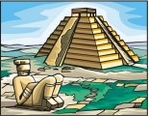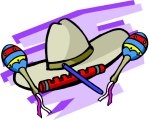
Worksheets and No Prep Teaching Resources
Reading Comprehension Worksheets
Ancient America
Hispanic Heritage

Ancient America
 Worksheets and No Prep Teaching Resources Reading Comprehension Worksheets Ancient America Hispanic Heritage |
 Ancient America |
| edHelper's suggested reading level: | grades 5 to 7 | |
| Flesch-Kincaid grade level: | 6.36 |
|
The Incas, Part 2
By Jane Runyon |

|
 1 The people of the Inca civilization lived high in the Andes Mountains. They had to adapt their way of living to their surroundings. Can you imagine trying to plant crops on a hillside? Can you imagine living in a civilization that had no written language? Can you imagine living thousands of miles away from other people in your empire?
1 The people of the Inca civilization lived high in the Andes Mountains. They had to adapt their way of living to their surroundings. Can you imagine trying to plant crops on a hillside? Can you imagine living in a civilization that had no written language? Can you imagine living thousands of miles away from other people in your empire? |
Create Weekly Reading Books
Prepare for an entire week at once! |
| Leave your feedback on The Incas, Part 2 (use this link if you found an error in the story) |
 |
Ancient America
|
 |
Hispanic Heritage
|
 |
Social Studies
|
 |
United States
|
|
|
|
|
 | Fifty States Theme Unit |
 |
Document Based Activities |